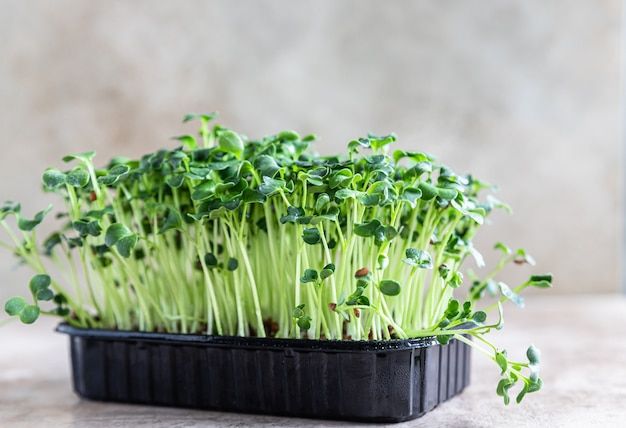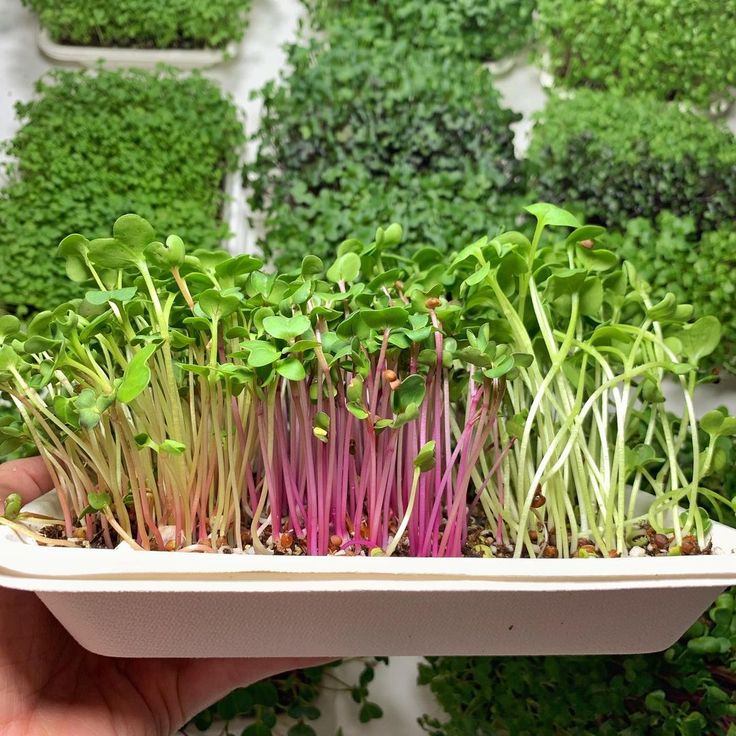Microgreens have gained popularity in recent years, not only for their vibrant appearance and unique flavors but also for their exceptional nutritional value. These tiny, young plants are typically harvested shortly after sprouting, long before they reach full maturity. Despite their size, microgreens pack a powerful punch of nutrients and are highly valued as garnishes, flavor enhancers, and textural additions in modern culinary practices.

What Are Microgreens?
Microgreens are the tender, edible seedlings of vegetables and herbs, harvested when they are just a few inches tall — usually between 1 to 1.5 inches (25 to 38 mm). At this stage, the plant consists of three primary parts: a central stem, one or more cotyledon leaves (the plant’s initial leaves), and often the first pair of tiny, true leaves. If allowed to grow beyond this size, these plants are classified as petite greens, no longer considered microgreens.
Unlike sprouts, which are consumed along with their roots and seed casing, microgreens are harvested by cutting the stem just above the soil or growing medium, leaving the roots behind.
Cultivation and Growing Conditions
Microgreens are relatively easy to grow, making them a favorite for both home gardeners and commercial growers. While a shallow plastic tray with proper drainage can suffice for small-scale cultivation, commercial operations often use specialized growing trays. Although they can grow in natural indirect light, indoor setups typically rely on artificial grow lights to ensure consistent, healthy growth.
Microgreens thrive in soilless, nutrient-rich substrates such as coconut coir, peat moss, vermiculite, or perlite. These mediums not only support healthy plant growth but also help manage moisture levels and reduce the risk of soil-borne diseases.
Fast-growing varieties, such as many from the brassica family, can be ready for harvest within 10 to 14 days of sowing, while others might take up to 4–6 weeks. Optimal conditions include high light levels, good air circulation, low humidity, and appropriate seed spacing to prevent fungal issues and other complications.
Nutritional Powerhouse
One of the most impressive qualities of microgreens is their dense nutritional content. Research conducted by the USDA’s Agricultural Research Service highlighted that certain microgreen varieties can contain up to 40 times more vitamins and minerals than their mature counterparts. Key nutrients found in microgreens include vitamin C (ascorbic acid), vitamin E (tocopherols), vitamin K (phylloquinone), along with essential minerals like iron, zinc, calcium, potassium, phosphorus, manganese, and selenium.
However, despite their rising popularity, the complete chemical composition of microgreens is still under scientific review, with ongoing studies aiming to better understand their potential health benefits.

Food Safety and Best Practices
As the demand for microgreens increases, particularly in urban indoor farming setups, attention to food safety has become increasingly important. Factors such as overcrowded seed density, poor lighting, limited air movement, and the absence of standardized Good Agricultural Practices (GAP) and Good Manufacturing Practices (GMP) can contribute to food safety concerns. It’s essential for growers — both commercial and home-based — to maintain hygiene, proper airflow, and optimal growing conditions to minimize risks.
Versatility and Accessibility
One of the biggest advantages of growing microgreens is their adaptability to limited spaces. They don’t require large fields or gardens and can be cultivated on balconies, windowsills, or in small indoor farms, making them an excellent option for urban dwellers or individuals without access to farmland.
Common microgreen varieties include beet, radish, carrot, garlic, onion, coriander, cabbage, cucumber, corn, chia, fenugreek, and various beans. However, it’s important to note that plants from the nightshade family — like potatoes, tomatoes, peppers, and eggplants — should never be grown as microgreens due to the presence of toxic compounds in their sprouts.
Conclusion
Microgreens stand out not only for their vibrant appearance and delicate flavors but also for their extraordinary nutritional value. With simple growing requirements, fast harvest times, and the ability to thrive in small spaces, they offer an easy and rewarding way to incorporate fresh, nutrient-dense greens into everyday meals. As research continues to uncover their full health potential, microgreens are poised to become a staple in both kitchens and health-conscious diets around the world.
Further Reading
If you’d like to dive deeper into the world of microgreens — their types, growing methods, and nutritional profiles — you can visit:
Microgreens—A Comprehensive Review of Bioactive Molecules and Health Benefits